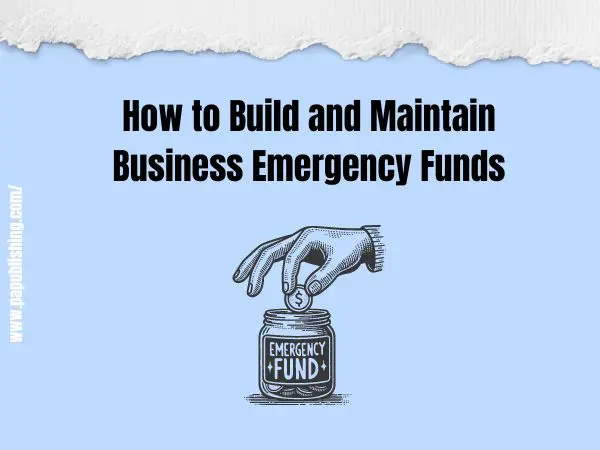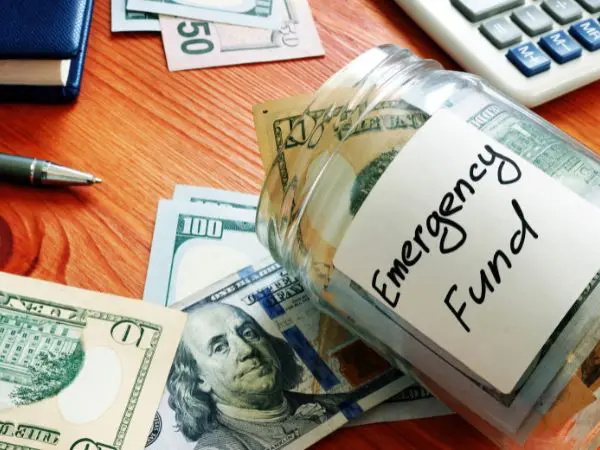How to Build and Maintain Business Emergency Funds
In today’s unpredictable economic world, every entrepreneur understands the importance of financial preparedness and, thus, a well-structured business emergency fund.
Running a business and scaling up is a tough task that requires facing obstacles of planning, managing funds, hiring better services, etc. An emergency fund keeps your company running and growing, protecting it from every possible halt.
Let’s break down the steps of building an emergency fund and see why it’s compulsory to have one!
What Is a Business Emergency Fund?
A business emergency fund is a financial safety net that neutralizes situations against unexpected expenses. It is a backup finance that keeps the company moving when it would otherwise have to limit its functionality.
It allows businesses to cover necessary costs during unforeseen circumstances without draining their regular operating budget or dipping into personal savings.
Steps to Build a Business Emergency Fund
Building an emergency fund requires discipline and strategic future planning. Here are the steps you can follow to plan a well-kept fund:
- Acknowledge Your Business’s Financial Needs
The first step in planning an emergency fund is for entrepreneurs to calculate how much they actually need to keep their business functioning in cases of emergency. It is better to keep track of the essential monthly expenses, including rent, utilities, inventory, and any additional necessary costs.
To create a realistic emergency fund, you should thoroughly understand your financial situation, habits, and costs.
- Set Saving Goals
Now that you know the amount you need to set up an emergency fund, apply it practically by setting realistic saving targets.
Consistency is key. Even a little but regular contributions will help you create a small business emergency fund. Moreover, keep these funds in a separate bank account from your regular use account to avoid the temptation of spending it on non-emergency affairs.
You may opt for a high-yield business savings account, which will give you easy access to funds, or you can opt for a money market account, which further decreases withdrawal monthly limitations and also has a higher interest rate than a high-yield savings account.
- Prioritize Your Fund in the Budget
The emergency fund that you set for your business is like a rainy day fund. You need it for additional costs that your regular operating business budget can’t offer, and therefore it needs to be treated as a priority.
Allot a special percentage of profits to your fund plan and never withdraw from it, in any case other than urgency. Also, if your business is going through a more profitable period, make sure to add more to your fund.
Maintenance of Funds
The establishment of a well-executed and structured business fund takes time and commitment. Hence, maintenance is the key to its survival and growth.
- Review and Adjust Regularly
Your business’s financial stability depends not only on a well-executed fund set-up but also on its regular analysis and evaluation to adjust it. As your business grows, you may need to adjust the value of funds accordingly.
- Replenish After Use
If you do have to utilize the emergency fund, make sure you immediately replenish it after use. This should be your top priority to ensure you’ve your safety buffer available for any future emergencies.
- Avoid Unnecessary Withdrawals
When one has a set amount in his funds, he is tempted to use it for every opportunity that arises, but in reality, that just kills the purpose of an emergency fund.
So, reserve these funds for dire times of need and work around the finances you have otherwise to keep the funds protected and available.
Benefits of Having Emergency Funds
There are numerous benefits of having emergency funds for your business setup, which also improve the likelihood of its survival. They are listed as follows:
- Improved business stability: A business emergency fund offers more than financial safety; it also allows financial stability in crucial times. You can maintain operations without scrambling for loans, and with this stability comes great peace of mind.
- Improved Reputation with stakeholders: By maintaining a well-executed emergency fund, you can significantly enhance your business’s credibility with lenders and investors. This helps build stronger partnerships and better access to financing.
- Long-term sustainability: A strong business fund allows one to bear economic weather storms. It provides the resources to make it through the business challenges, confirming its lifetime potential.
Conclusion
Building and dedicatedly maintaining an emergency fund is essential for its long-term sustainability.
By setting aside a small amount, contributing to it regularly as it grows, and resisting unnecessary withdrawal, you’ll ensure that your business withstands any challenges that come its way. Whether you’re a small business owner or a larger enterprise, an emergency fund is an investment in your company’s long-term success.




